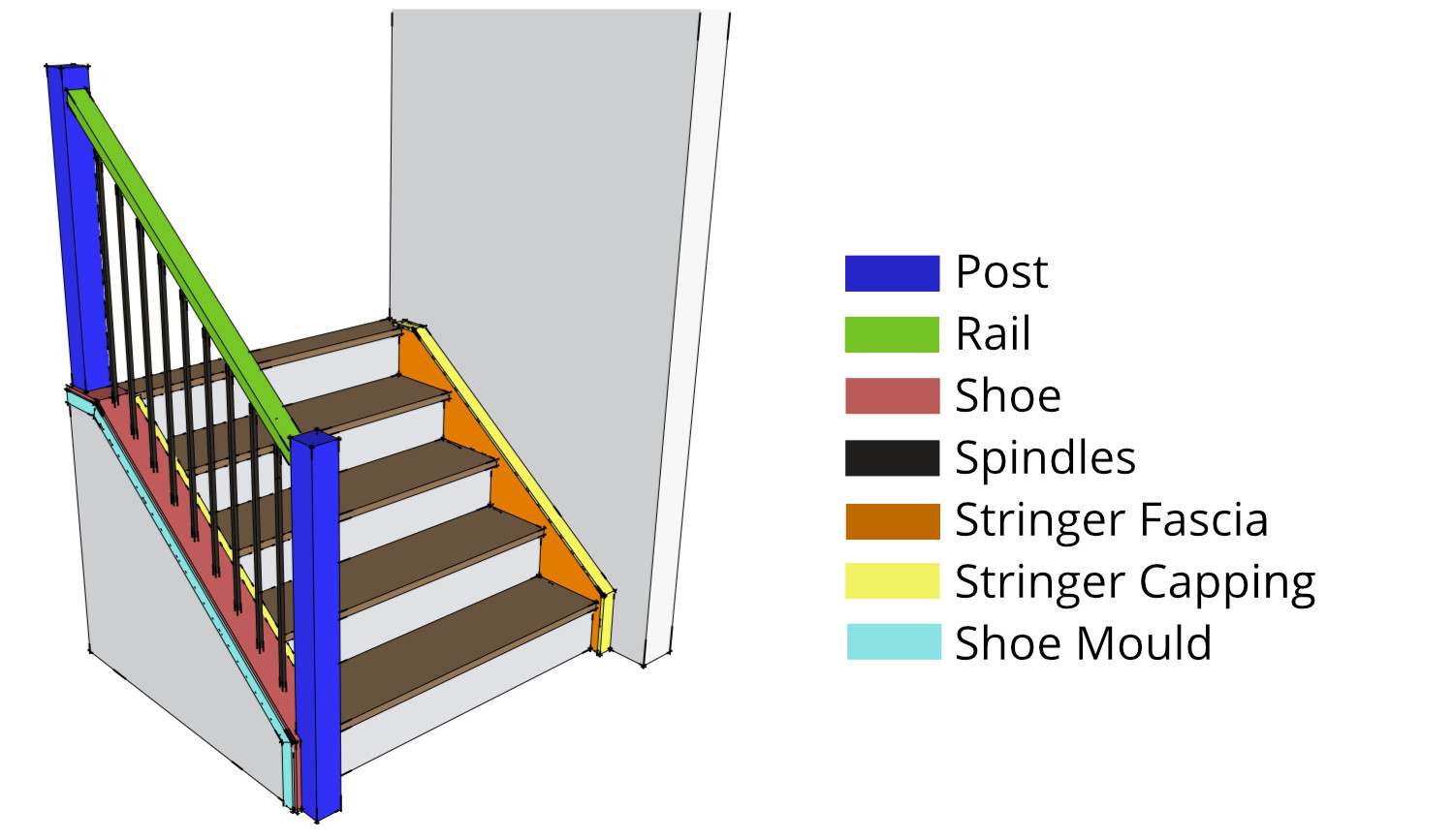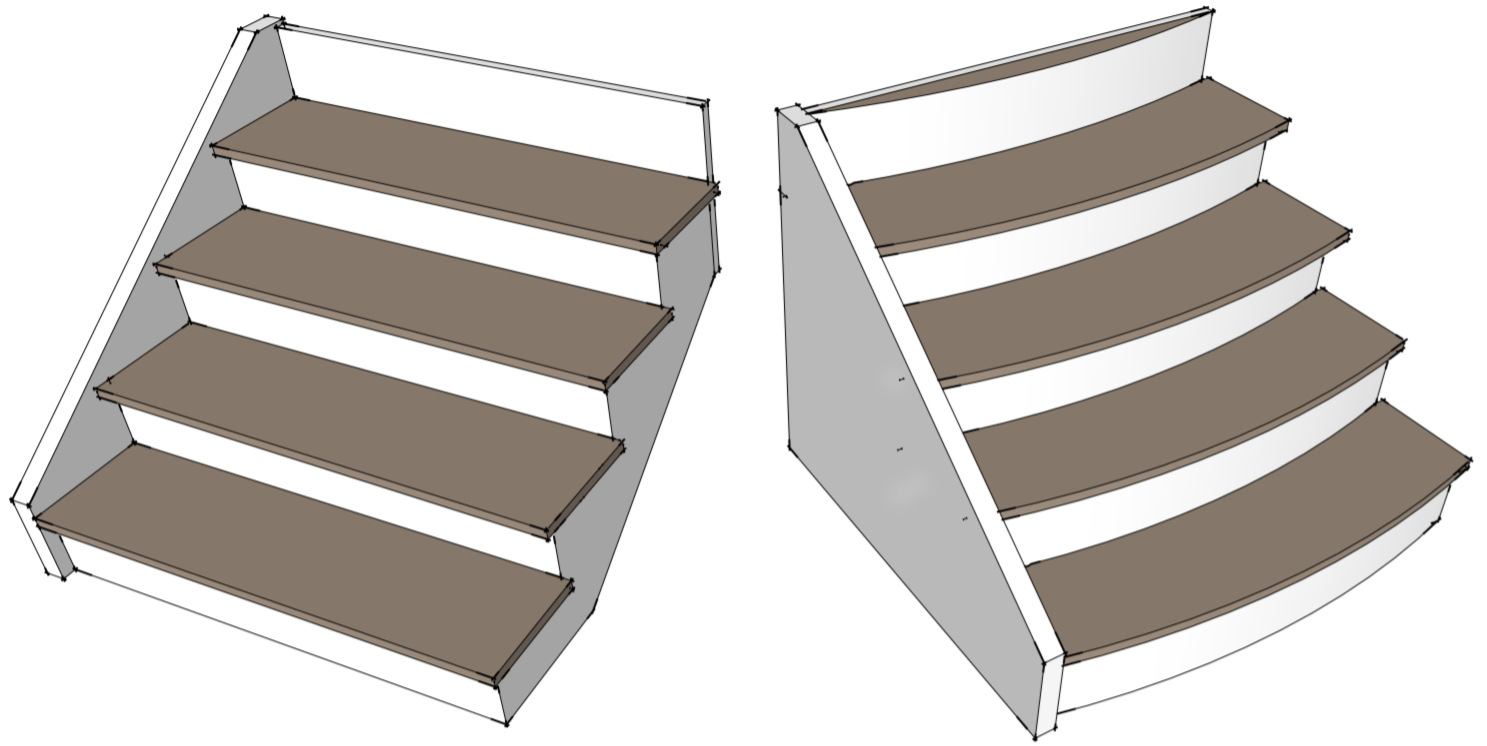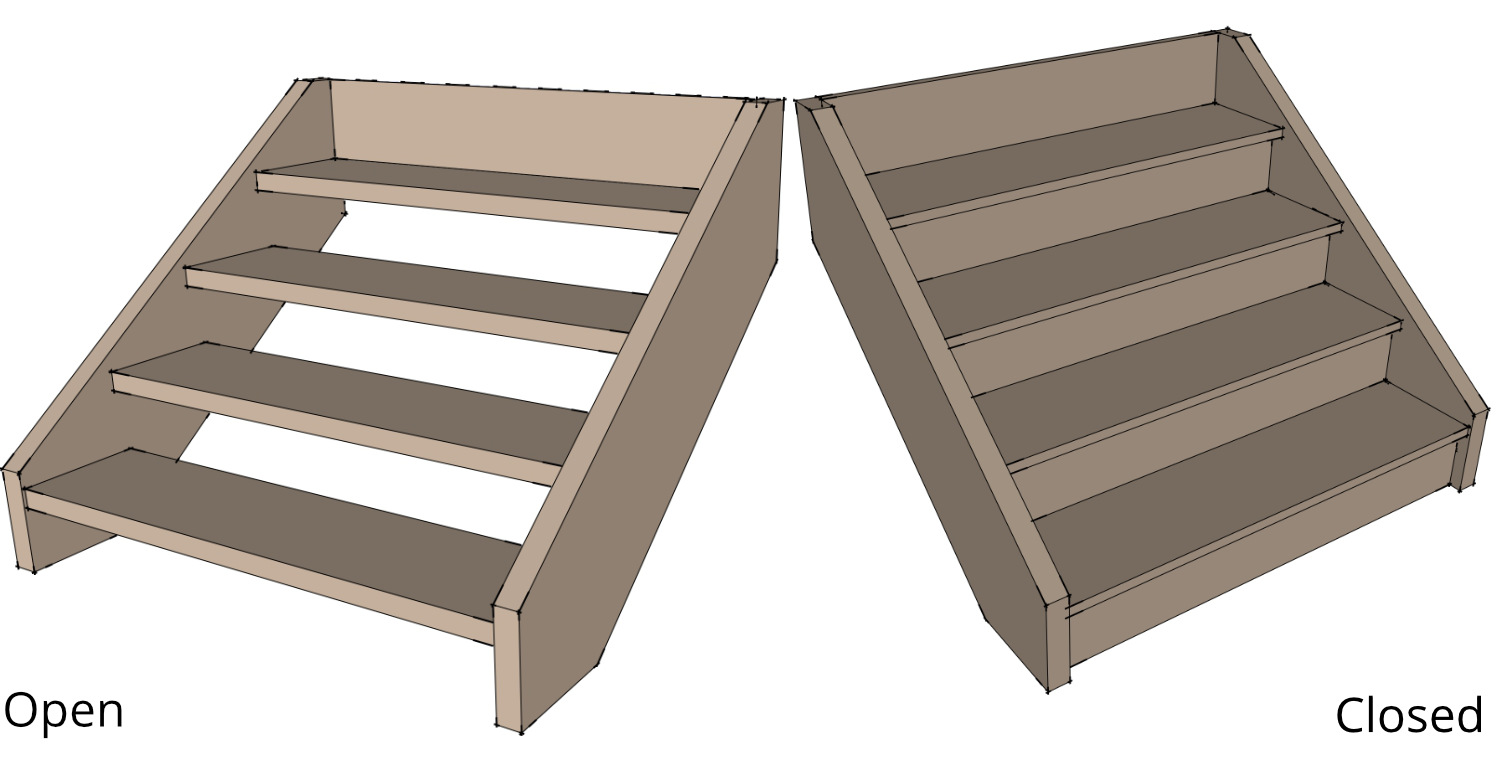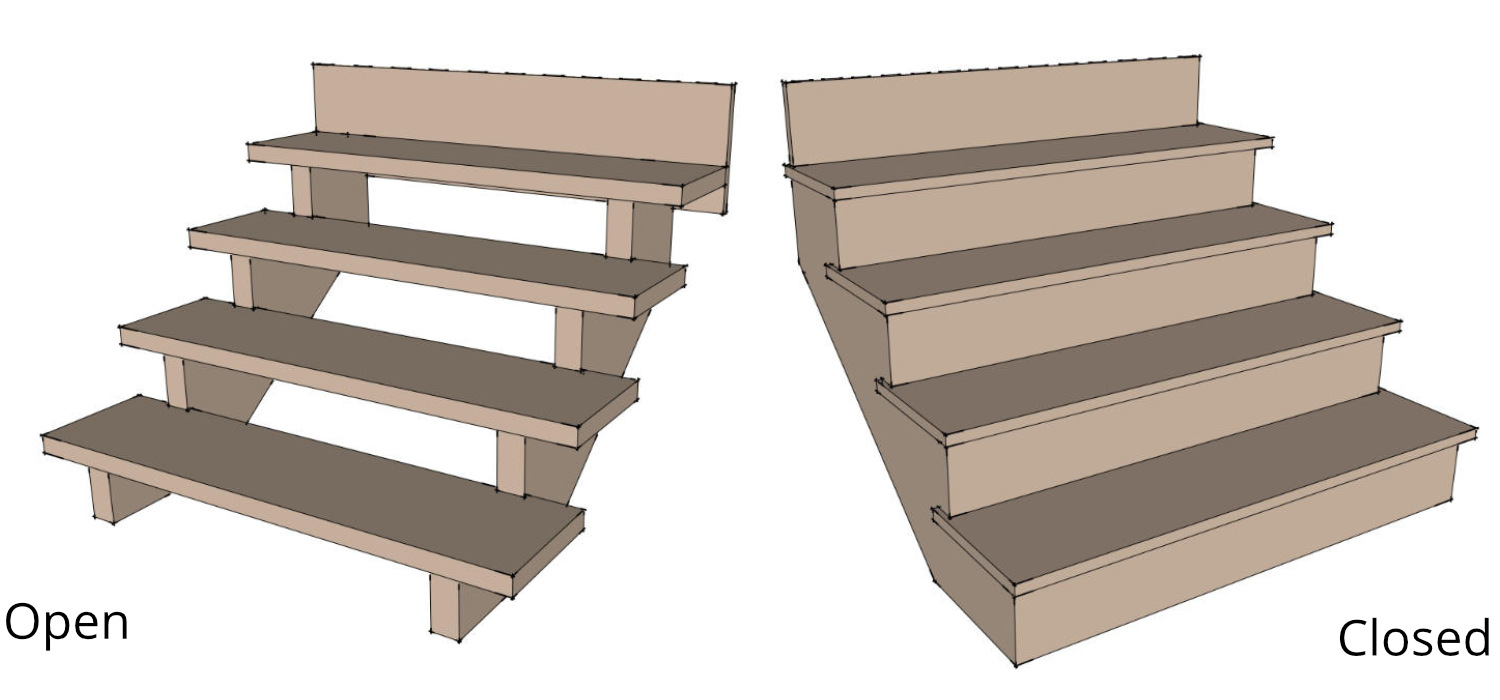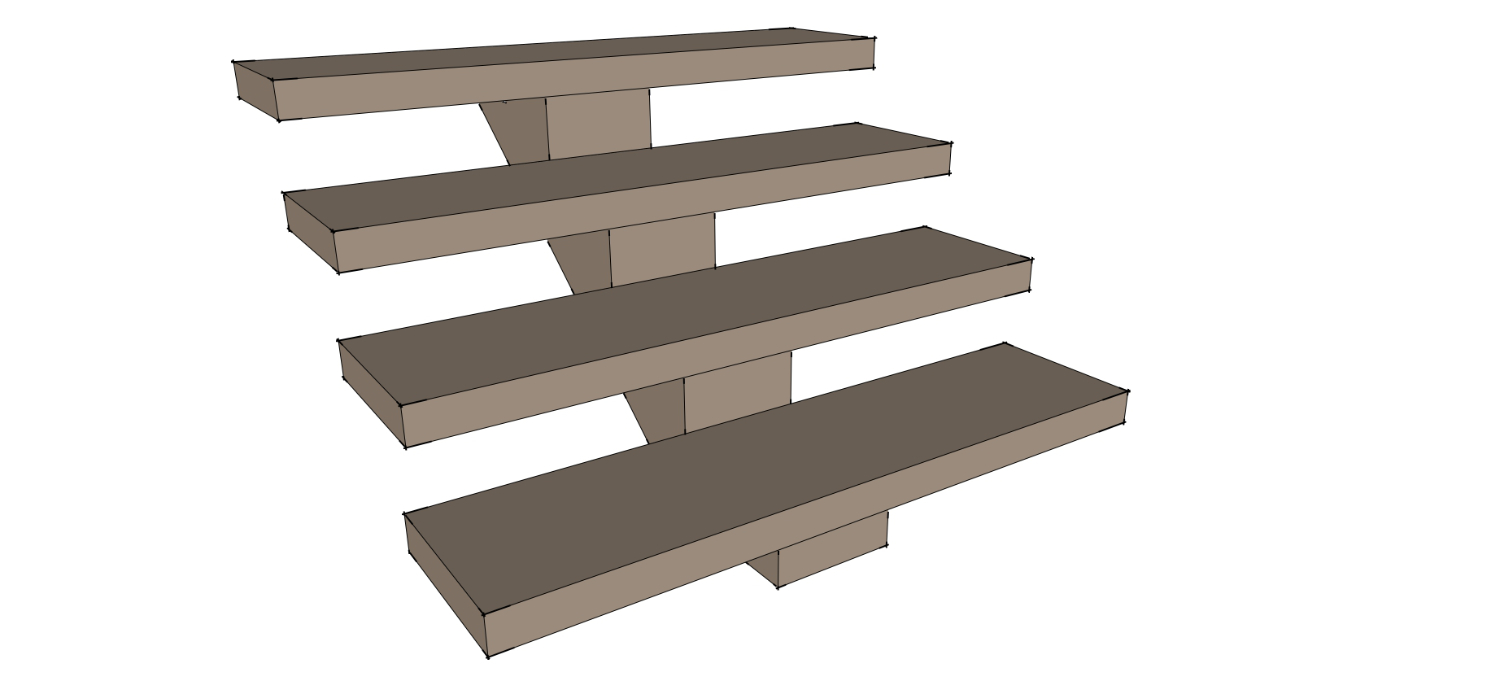Staircase Basics
Understanding Treads, Risers, and Nosings
The riser is the vertical surface of the stair. The tread on the other hand is the horizontal surface of the stair and the part of the stair you step on.
Nosing is the portion of the tread that overhangs the front of the riser. Often a stair builder will talk about the rise and run of the stair. The rise is the vertical dimension from tread to tread, while the run is the horizontal dimension from riser to riser (not including the nosing).
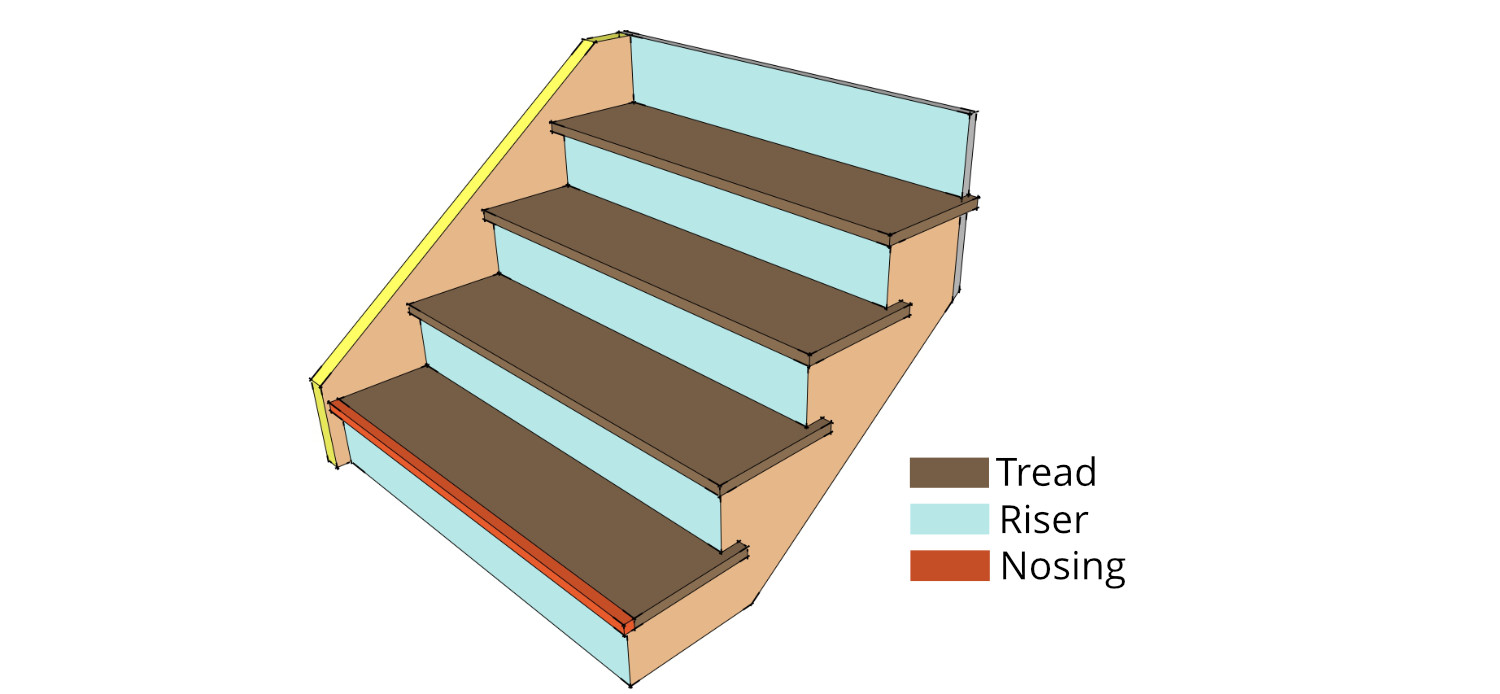
Understanding Railing, Staircase & Everything in Between
The rail is the part of the railing system that you touch with your hand as you go up and down a stair.
The post (also called a newel) is the vertical structure that connects the stair or floor to the railing system.
Spindles, which are vertical wood or metal structures, are interspersed between posts to provide a safety barrier along the stair system.
Shoe is the bottom plate that spindles (or glass) are set into.
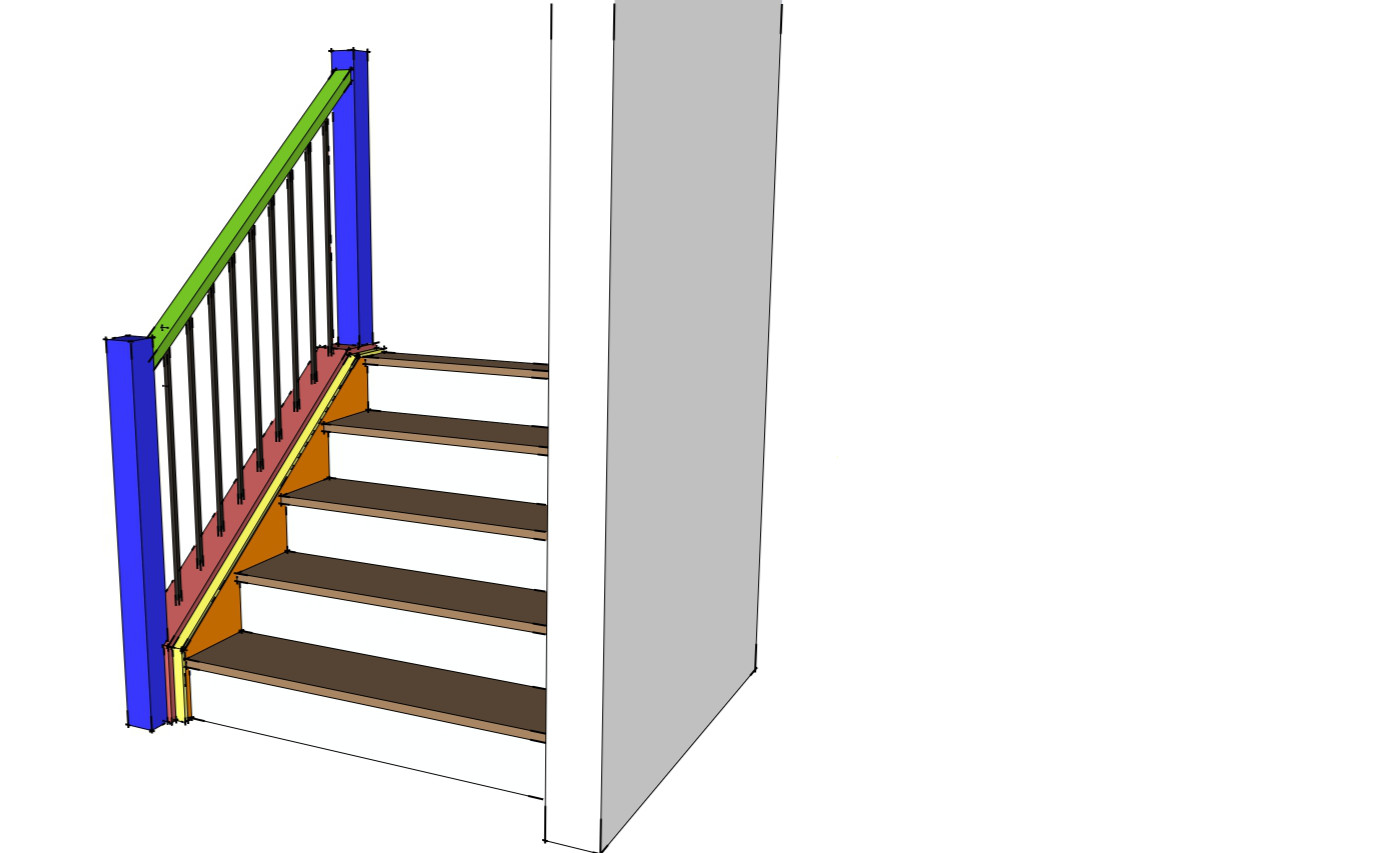
Understanding the Stringer
Stringers provide support to a staircase and there are many different varieties (see below for the different varieties).
Stringer fascia is the finished surface that on a western style stringer is on the inside vertical surface of the stringer.
A stringer capping is the finished surface that is on the top face of a western style stringer.
Shoe mould is moulding that covers the gap between the shoe and the drywall surface of the wall below where the shoe is installed.
